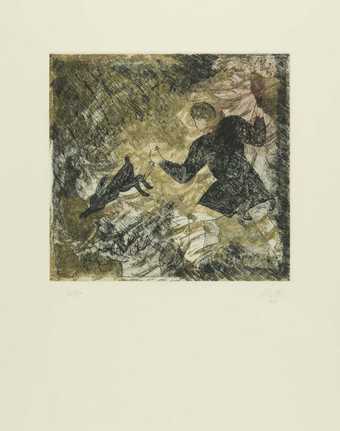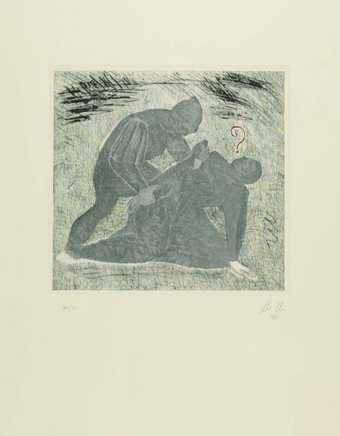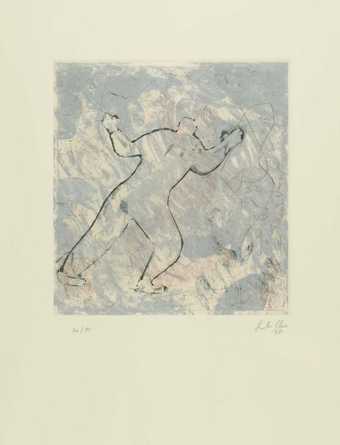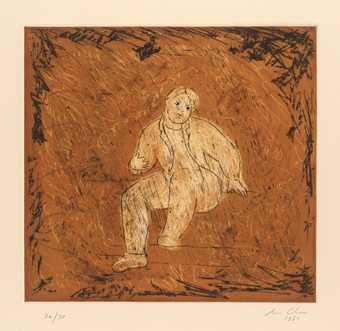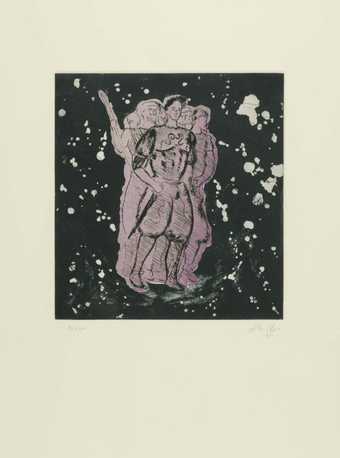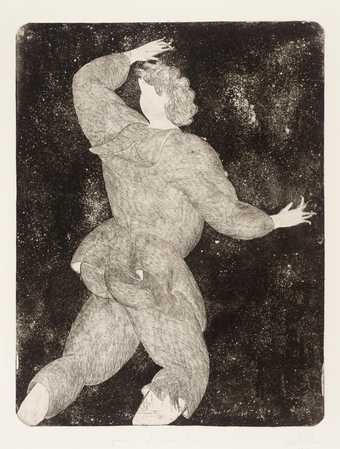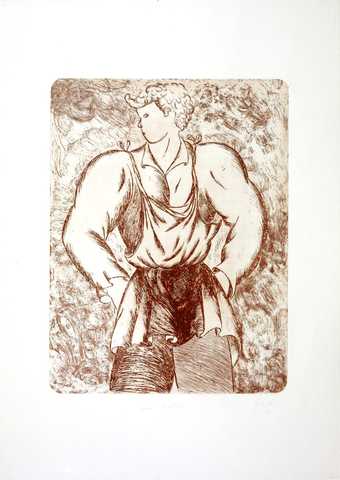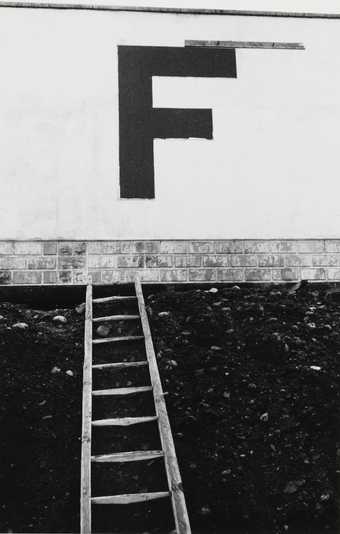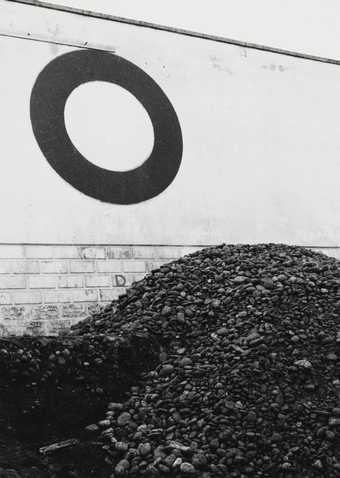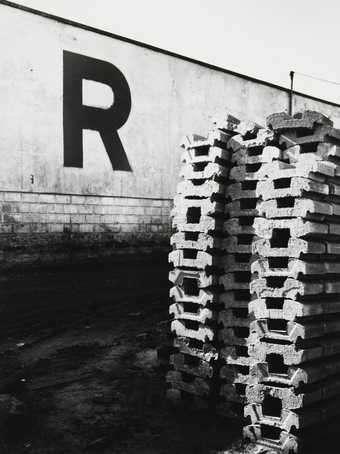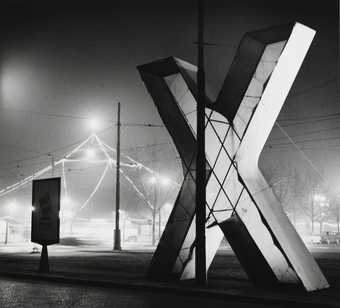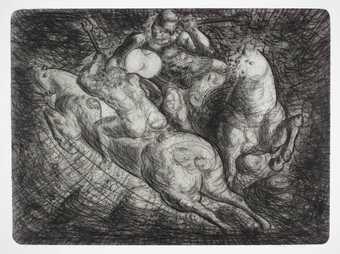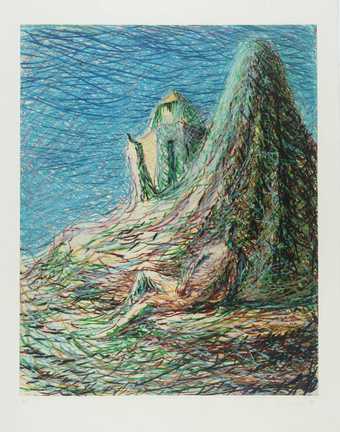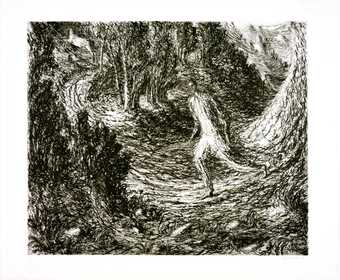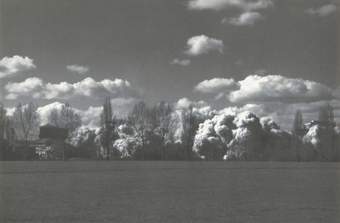
In Tate Britain
Prints and Drawings Room
View by appointment- Artist
- Roberto Barni born 1939
- Original title
- Paternità
- Medium
- Etching and engraving on paper
- Dimensions
- Image: 237 × 473 mm
- Collection
- Tate
- Acquisition
- Purchased 1984
- Reference
- P77025
Catalogue entry
Roberto Barni born 1939
P77025 Fatherhood
1982
Etching and engraving 237 x 473 (9 3/8 x 18 5/8) on Carini paper 762 x 565 (30 x 22 1/4); plate-mark 244 x 480 (9 5/8 x 18 7/8); printer's and publisher's stamps ‘CARINI TUSCANY'; printed and published by Carini, Florence in an edition of 25
Inscribed ‘Roberto Barni' below image b.r. and ‘PATERNITA' and ‘10/25' below image b.l.
Purchased from Nigel Greenwood Gallery (Grant-in-Aid) 1984
Lit: Maria Luisa Frisa, Paolo Balmas, Roberto Barni, exh. cat., Casa di Masaccio, San Giovanni Valdarno 1983, pp.14-8, 22-6; Howard N. Fox, A New Romanticism. Sixteen Artists from Italy, exh. cat., Hirshhorn Museum and Sculpture Garden, Washington DC 1986, p.30
This entry, unless otherwise stated, is based on a letter from the artist to the compiler post marked 19 May 1988. All quotations from the letter have been translated from Italian by the compiler.
The artist describes the scene in P77025 as follows: ‘A whirlpool destroying an order and a perfection. The objects and the ruins will be rearranged into a new structure'.
In 1979 Barni began to paint scenes of tumbling columns such as those in P77025. The columns interested him because ‘paradoxically they were of vitality and hope'. According to Fox:
In Barni's art, history is presented, metaphorically, as an explosion, usually of architectural fragments blasting into the foreground of the picture with evident destructive force. The fragments - classical columns, porticoes, arches and statuary ... represent the art of the past and its lofty purposes. In a larger sense, they also represent all of material culture, exalted or trivial, grand or merely necessary, and the things that man must fabricate for his continued survival (p.30).
Concerning the chaos created by the storm Barni writes, ‘in the chaos, in the hurricane, in the impossibility of order the details acquire importance'. The feeling of turbulence is accentuated by the use of green in P77025; Barni writes ‘The colour green makes me think of a storm'.
The artist states that P77025 relates ‘very loosely to the Fall of Babylon by Cimabue at Assisi, animals and architecture whirling together'. The frescoes attributed to Cimabue (c.1240-1302) in the Upper Church of San Francesco at Assisi were probably painted between 1288 and 1290. They illustrate scenes from the Old and New Testaments, including the Fall of Babylon. The story of the fall of the corrupt city of Babylon to the Persians is told in Isaiah 47. Barni writes ‘I always think of the necessary destruction of "Babylon" and of the complexity of the message'.
The artist has made other works on the theme of falling pillars, including several with the same title as P77025: ‘Paternità' 1981, mixed media on paper, ‘Paternità' 1982, oil and charcoal on paper, and ‘Paternità' 1983, mixed media on paper (repr. San Giovanni Valdarno exh. cat. 1983, respectively pp.32, 35 and pl.12 in col.). These works differ from P77025 in the clearer definition of the human faces and the presence of flying cockerels at the top of the scene. Other works on this theme are ‘La Caduta di Babilonia' 1980, mixed media on paper (repr. Roberto Barni, exh. cat., Sala d'Arme di Palazzo Vecchio, Florence 1985, p.33) and ‘Aventura del Pensiero Domestico' 1981, charcoal on paper (repr. Roberto Barni, San Giovanni Valdarno 1983, exh. cat. p.33 in col.). Barni explains that he chose the title ‘Fatherhood' because it made him ‘think originally of the initial upset and fear for one's sons'.
Published in:
The Tate Gallery 1984-86: Illustrated Catalogue of Acquisitions Including Supplement to Catalogue of Acquisitions 1982-84, Tate Gallery, London 1988, pp.310-11
Explore
- architecture(30,960)
-
- features(8,872)
-
- architectural fragments(37)
- column(444)
- ruins(3,711)
-
- townscape(99)
- townscapes / man-made features(21,603)
-
- townscape(3,297)
- universal concepts(6,387)
-
- destruction(383)
- history(1,983)
- crowd(646)
- countries and continents(17,390)
-
- Iraq(22)
- Babylon(5)
- lifestyle and culture(10,247)
-
- high art(60)
- contemporary society(640)
You might like
-
Sandro Chia The Artifice
1981 -
Sandro Chia To the Tower
1981 -
Sandro Chia About the Unseizable
1981 -
Sandro Chia A Good Soul
1981 -
Sandro Chia And the Heroes at the Window
1981 -
Sandro Chia Running Boy with Strange Fingers
1981 -
Sandro Chia The Butcher
1981 -
Alfredo Camisa Urban Alphabet F
1961, printed 2005 -
Alfredo Camisa Urban Alphabet O
1961, printed 2005 -
Alfredo Camisa Urban Alphabet R
1961, printed 2005 -
Alfredo Camisa Urban Alphabet X
1961, printed 2005 -
Roberto Barni Knights of the Daily Round
1982 -
Lorenzo Bonechi The House of the Angel
1984 -
Lorenzo Bonechi The Deer Hunt
1985

